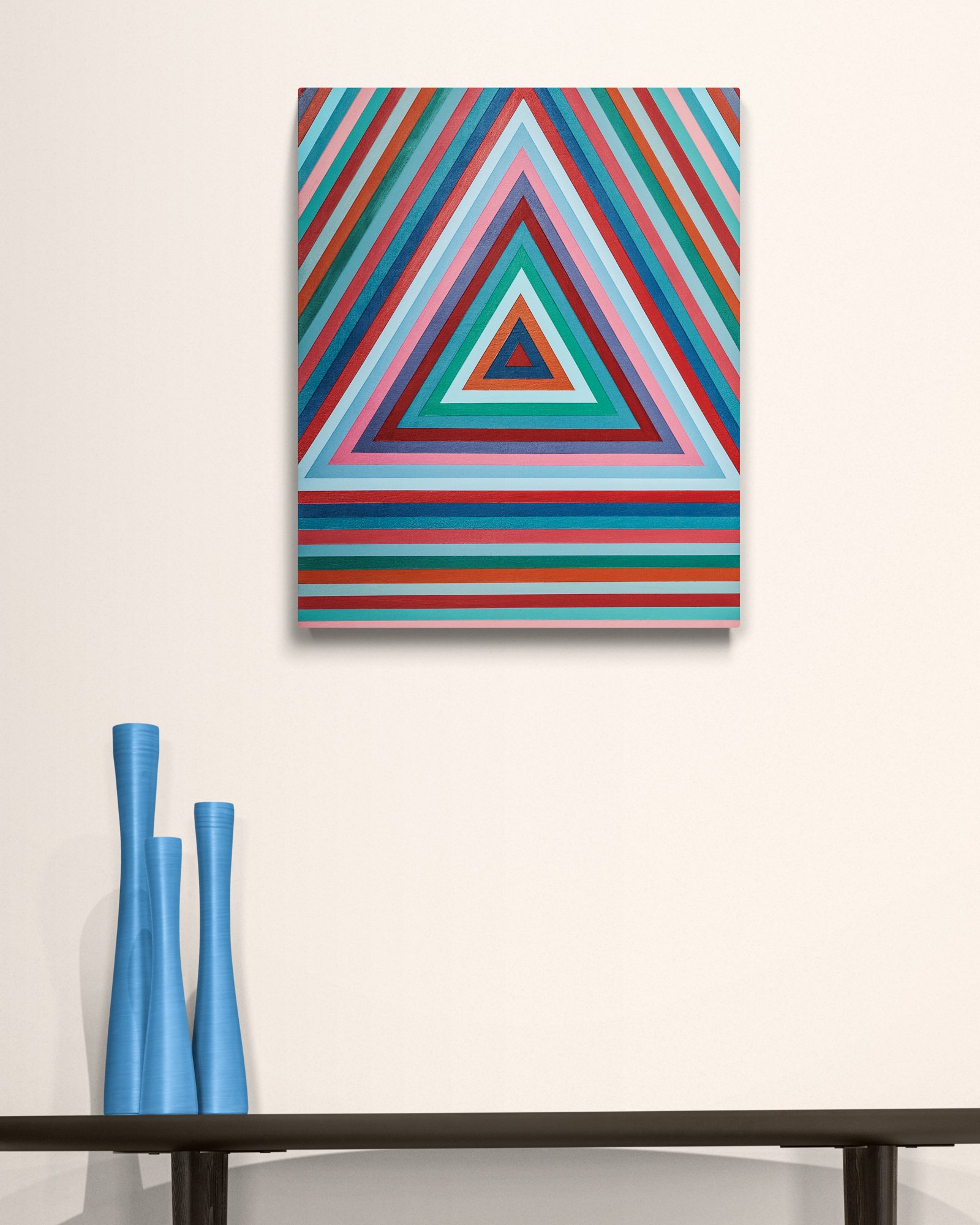LOST IN TRIANGULATION
Acrylic on Canvas or Wood Panel
★ Sold
Artist Statement
“While many were running in circles, I brushed with triangles”
Most of us see the inside of our abodes differently after so much time spent inside. There are few round lines in our apartments, huts, and houses. We tend to prefer straight arrows, neat boxes. The straight walls close us in. The right angles leave no room for escape. Condominiums replace cubicles as locus of contemporary alienation.
Like half of humanity, I too sheltered at home between four, or rather, three walls. Indeed, as the weeks dragged on, springtime blossomed and the pandemic raged. For the first time in our lives, the wall with the door to the outside has disappeared. The mythologies that represent our personal indoor spaces gradually eroded. How do I represent this change? How do I capture the changing certitudes and new elements of a closed in world? All-important questions for a photographer.
The home feels now like a dug-out blinding us from the realities of the world, a safe harbor to recuperate, a workshop to develop new ideas: the common denominator is the ability to come an go. One wall has an exit but that partition is now gone. From the normality of four walls, only three remain. The inside of our heads and homes, formerly distinct spaces have now synthesized into one. The square turns into a triangle.
As a collective, city, or commune, we remain confined without the freedom to step out and peer into what is happening outside. However, there is light and feeling of all shapes and kinds. Perhaps this is what I sought to reveal through my kaleidoscopic depictions, a reflection of the wide spectrum of emotions that our households have been through at the mercy of a mysterious virus.
So I was at home, stuck between three walls. If I was unable to capture life through my camera, I had to recreate it. A photographer unable to see the world appear in front of their trained eyes then seeks to think it into being. And in doing so, I create a new universe based on the elementary symbol of my own personal zeitgeist: the triangle.
The emergence of this shape as central tenet of spatial imagery is not unheard of. I create in contemplation of the works of pre-eminent French masters.
Andre Breton considered the Place Dauphine as Paris’ pubis. In the surrealist imagery, the two meanders of the Seine around Ile de la Cite compose the “legs” of the French capital. Breton writes of the square’s “triangular configuration and the central slot bisecting the area in two wooden spaces”. There are no coincidences: Place Dauphine’s eminent feminine qualities haunted me in my childhood stomping grounds, just a few hundred meters away. These womanly threads are woven into my body of work.
How does a photographer become a painter? One might say I always have been. A photograph is a painting of light. In New York, I’ve outfitted my Gowanus studio to capture the reflection of bodies and souls through the light exposed from the North. This is my trademark angle and one of the catalysts for the singular disclosure in my portraits.
Now, the light remained, but the models were gone. Bubbling with creative energy, visited by my seminal passions, stuck between three walls, I got to work. As the light shines through the stained glass of cathedrals to illuminate revealed universes, the triangular medium illuminates our shared experience of life.
With this spatial project, I have become unstuck in time. This series of paintings reveal the surrealist inspirations, cubist aspirations, and existentialist rumination that shaped my formative years as an artist, as well as in conversation with the Op Art contemporaries: Riley, Vasarely, or Richard Anuszkiewicz. A body of work emblematic of the trials of our time, and the promise of alternative creative genesis for a new epoch.

































